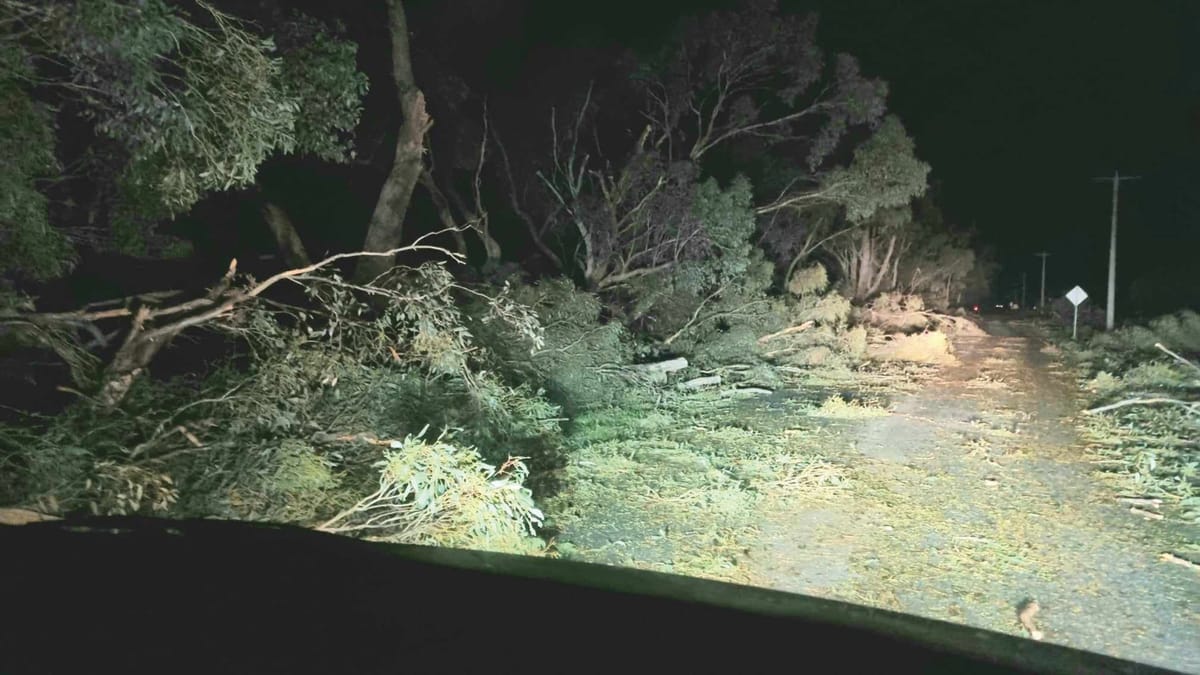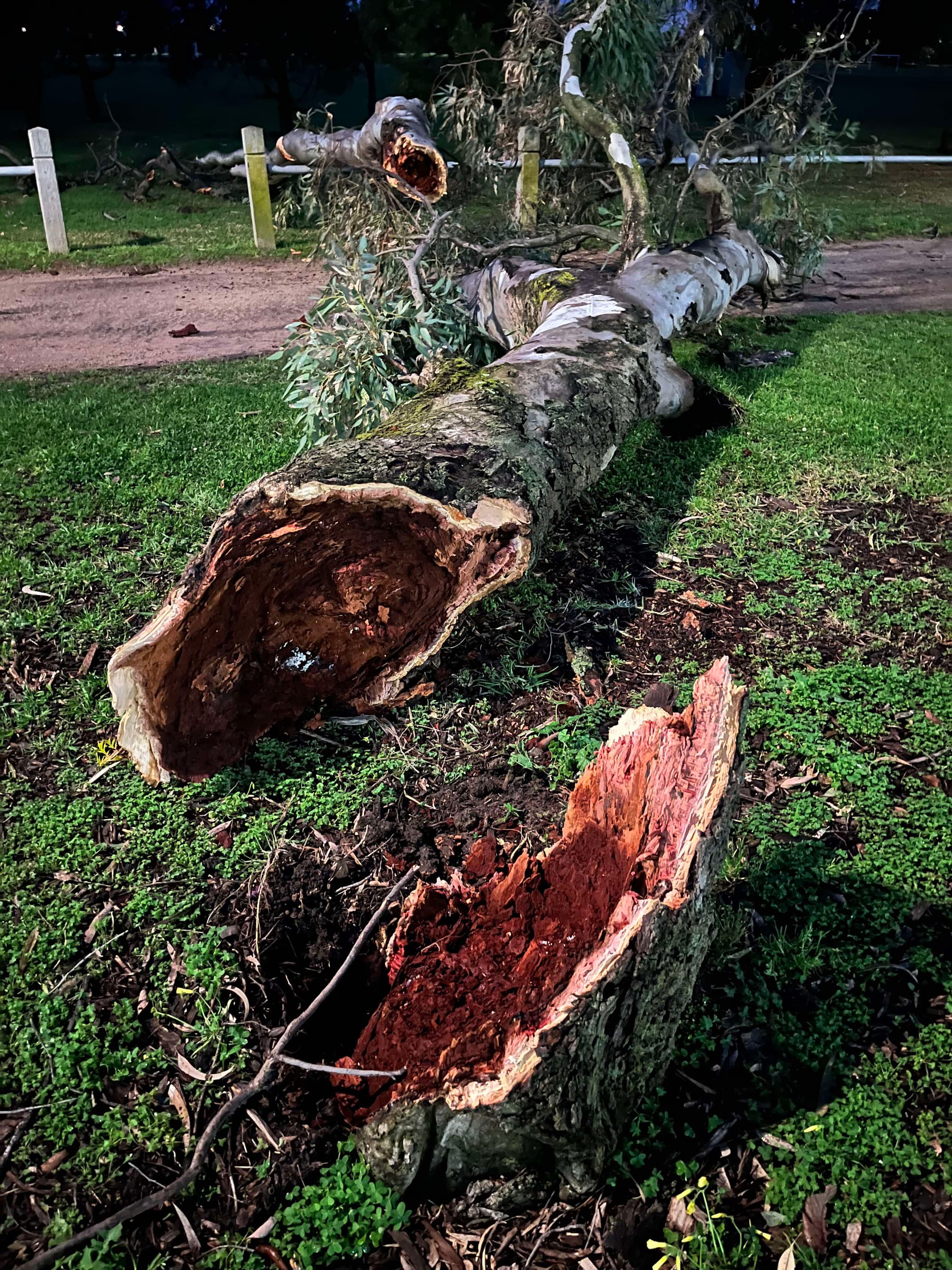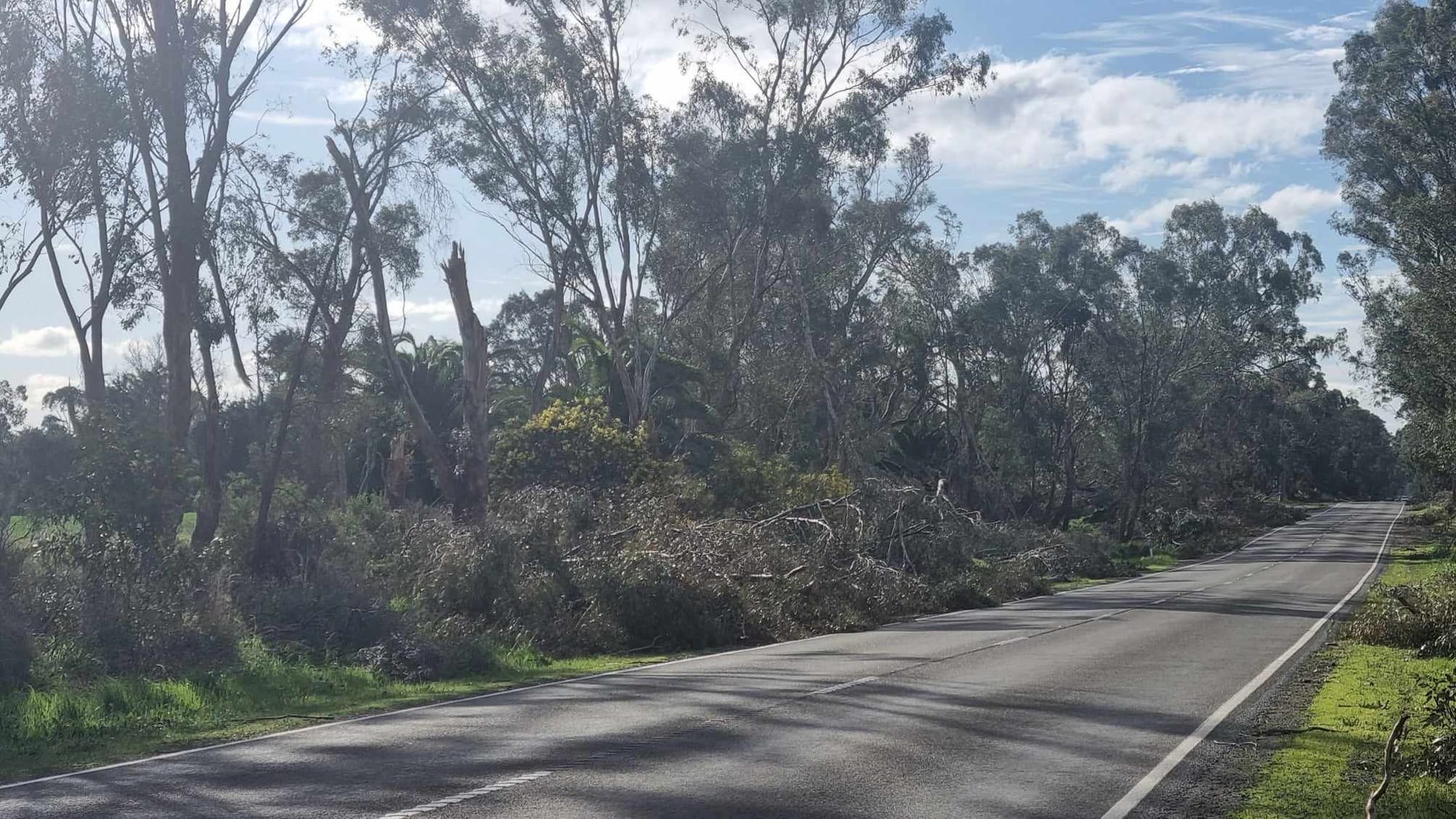Habitat damage in wild weather

I hope everyone stayed safe in the storms earlier in the week. We were extremely lucky at our Bunbartha shelter as a fierce, mini tornado swept through only a few kilometres from us and caused a lot of damage to many of the large roadside trees.
In times of severe storms like this, our thoughts of keeping safe and acknowledging the damage caused is predominantly centred around our man-made structures such as powerlines and buildings. When trees come down, unless they are blocking roads, driveways or land on our infrastructure or possessions, we may not give much thought to the repercussions for our wild creatures.
The storm damage between Bunbartha and Zeerust certainly affected our roads and some infrastructure. Roads can be cleared and we can rebuild our man-made dwellings and replace things that may have been damaged....but it’s not so easy to replace an old growth tree.
Sadly, many trees came down and most of them were of considerable age. Our old growth trees provide homes, shelter and nesting sites for a plethora of different species. These trees are the ones that are aged enough to possess hollows, lots of canopy and high branches. Many bird species choose nesting trees for their height. Birds of prey, magpies, ravens and other species prefer their nests high in the top canopy.

Storms are, of course, natural events which we have no control over. For eons our environment has faced the perils of severe weather in the form of severe winds, drought, fire from lightning strikes and flood...and survived. The difference now is the fact that natural habitat has declined considerably and is fragmented and isolated, so a natural disaster can obliterate an entire ecosystem extremely quickly.
A few years back when fire went through an area where the Gippsland Water Dragon existed, it was devastating for this species as their natural habitat range had already been largely reduced through human impacts such as clearing. Roadside trees are important in this regard as they are often the only remaining old growth trees and, ironically, contain some of the least disturbed habitat for many areas where farmland and human activity, including housing, has seen the landscape denuded of old growth trees.
Being in close proximity to a busy roadside is not ideal for any wildlife, particularly nesting birds. So many young birds get hit on our roads in their maiden flight because of this reason but they choose these trees specifically and it makes perfect sense when you realise roadside trees are often the last remaining old growth trees in an immediate area which was once thick bushland pre European settlement.

My heart aches for the habitat and wildlife homes that have been lost in the recent storm. We may think there is not much to be done in the way of protecting our habitat from naturally occurring disastrous events such as this one...but there is.
If you have single old growth paddock trees or patches of old growth habitat, you can enhance these areas by providing a bit of protection. We can plant both understory and other trees of the same species around them. Trees in a forest are protected considerably more so than lone standing trees.
Another important aspect to consider is connectivity to other remaining habitat. This is really important because if one section gets severely impacted by a natural disaster such as wind, fire or flood, wildlife have more of a chance to move to another area until sufficient regeneration can occur.
It’s a numbers game really. The more habitat we provide and protect, even prolific damage will not be as devastating to species of plants and animals alike as a whole. If only five percent of a species’ habitat remains and if half of that is affected it becomes a considerable amount in regards to the survival of a species. If eighty percent of habitat remains, half of it being compromised will still be a significant amount but species will cope on a whole.
If you own property and have areas which may not be as productive for farmland as others, please consider planting indigenous species to your area to help provide more habitat. Think about what habitat you do have, consider enhancing that and also consider planting those all important corridors to help reconnect existing habitat. There is always something we can do to help!




